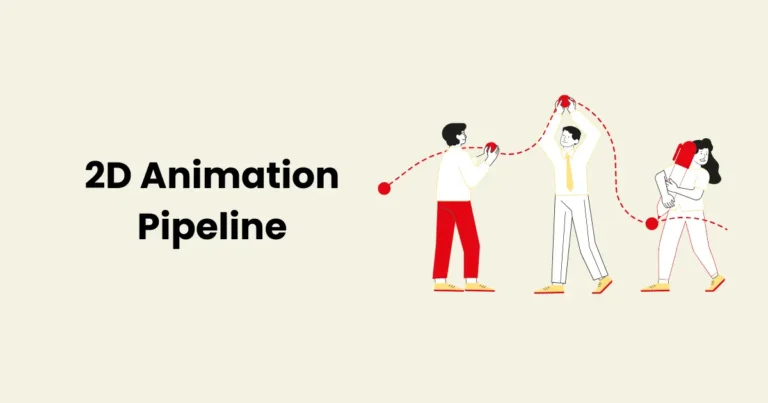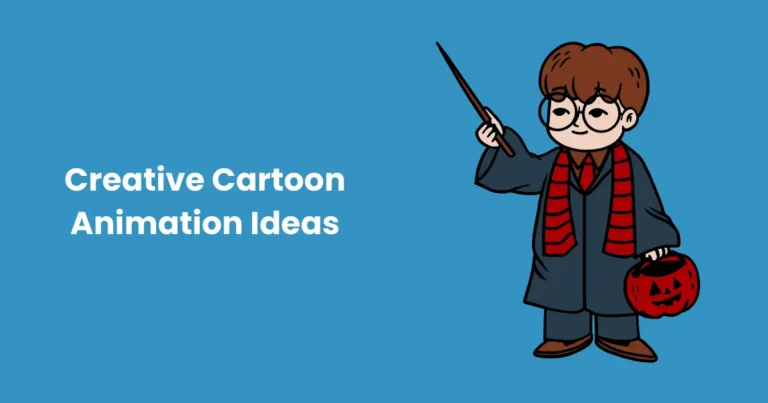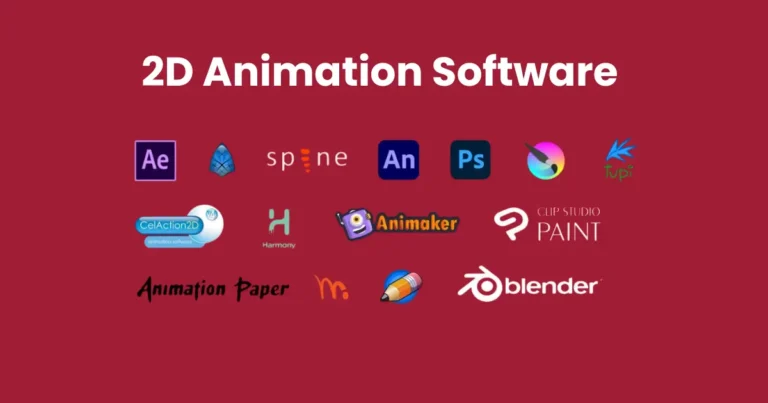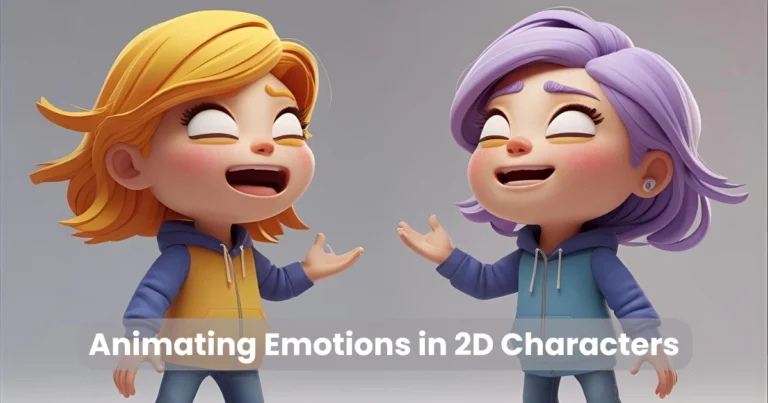Classic 3D Animation Characters | All you need to know
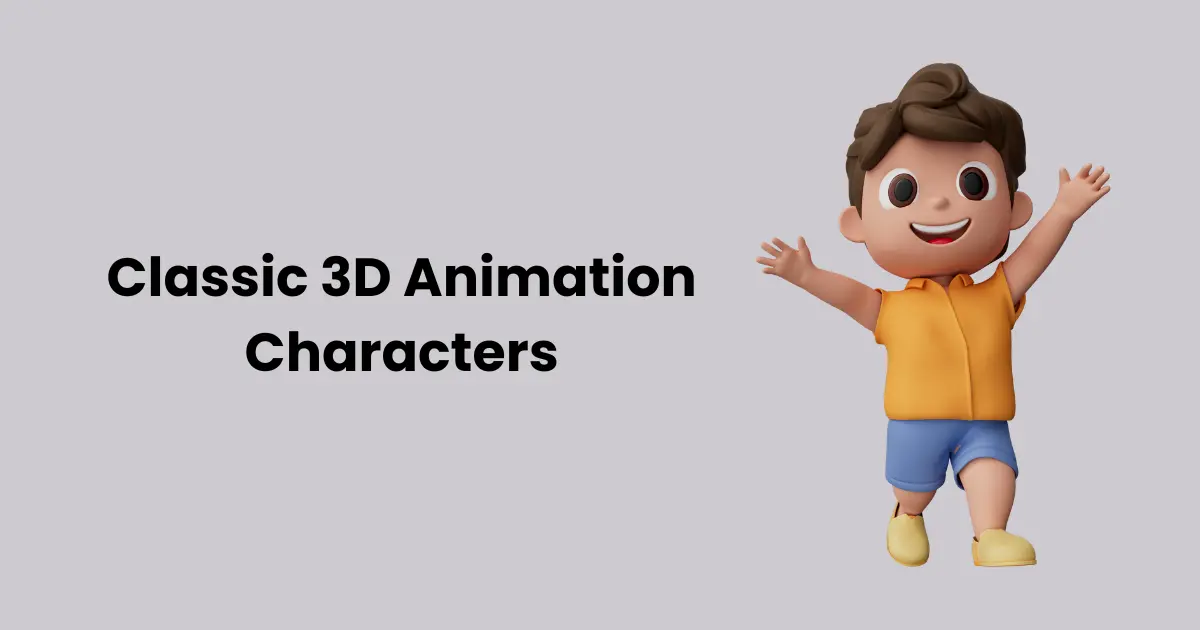
Contents
- 1 Characteristics of Classic 3D Animation Characters
- 2 Techniques Used in Creating Classic 3D Animation Characters
- 3 Tips for Designing a Classic 3D Animation Character
- 3.1 1. Focus on Strong, Simple Silhouettes
- 3.2 2. Build a Strong Backstory and Personality
- 3.3 3. Use Exaggeration to Amplify Personality
- 3.4 4. Pay Attention to Proportions and Shapes
- 3.5 5. Color Palette and Textures
- 3.6 6. Design for Expressiveness
- 3.7 7. Keep the Character Functional and Easy to Animate
- 3.8 8. Consider the Character’s Environment and Interaction
- 3.9 9. Test and Iterate
- 3.10 10. Stay True to the Story
- 3.11 Conclusion
Classic 3D animation characters have shaped the landscape of animation, bringing fictional worlds to life with depth, personality, and movement. These characters, often created through a meticulous blend of artistry and technology, have become icons in both entertainment and pop culture. The evolution of 3D animation has allowed animators to push the boundaries of creativity, giving rise to characters that are not only visually captivating but also emotionally engaging. Whether it’s the charm of a beloved animated hero or the realism of a complex, lifelike creature, classic 3D animation characters remain a central feature in animated films, video games, and commercials.
In this article, we’ll explore the journey of classic 3D animation characters, their defining features, the techniques used to create them, and their impact on modern animation. By delving into the elements that make these characters timeless, we aim to offer a comprehensive understanding of what goes into bringing a classic 3D animation character to life, ensuring they resonate with audiences for years to come. Whether you’re an aspiring animator or a seasoned professional, this guide will serve as an insightful resource for appreciating the artistry and innovation behind classic 3D animation characters.
Characteristics of Classic 3D Animation Characters
Classic 3D animation characters are distinguished by a variety of key characteristics that make them stand out in the world of animation. These features contribute to their ability to engage audiences, evoke emotions, and maintain lasting appeal. From visual design to the way they express themselves, every detail of these characters is carefully crafted to create a memorable and immersive experience. Below, we explore some of the most important characteristics of classic 3D animation characters.

Visual Design
One of the primary features of classic 3D animation characters is their visual design. These characters are typically designed with exaggerated features and stylized proportions that help convey their personalities and roles within the story. The visual design often follows principles of simplicity and clarity, making the character easily recognizable and memorable. For example, characters like Woody from Toy Story or Shrek have exaggerated proportions, such as oversized heads or distinct facial features, which emphasize their unique traits and make them instantly identifiable.
The color palette and textures applied to a character’s design are also important aspects. Classic 3D animation characters often feature bright, bold colors that evoke specific emotions or highlight key features of their design. Textures are applied in ways that bring out the character’s uniqueness, whether it’s the roughness of a creature’s skin or the softness of a hero’s costume. These elements contribute to the overall aesthetic and ensure that the character is visually appealing.
Personality and Expression
The personality of a classic 3D animation character is one of its most essential traits. These characters are crafted not only to look good but also to have distinct, easily relatable personalities. Whether they are heroes, sidekicks, or villains, their character traits drive their actions and interactions within the story.
Facial expressions and body language are key to conveying these personalities. Classic 3D animation characters often display exaggerated emotions through their faces and movements, which help make them more expressive and engaging. For instance, a character like Buzz Lightyear in Toy Story uses a combination of bold gestures and facial expressions to demonstrate confidence, while Mike Wazowski from Monsters, Inc. conveys charm and vulnerability through his expressive eyes and comical movements.
Additionally, voice acting plays a crucial role in enhancing the character’s personality. The right voice can give life to a character and deepen the emotional connection with the audience. For example, the voice of Robin Williams as the Genie in Aladdin added another layer of humor and warmth to the character, making him unforgettable.
Relatability and Depth
Classic 3D animation characters often possess a level of depth that makes them feel real, despite their animated nature. Their personal growth, struggles, and relationships with other characters allow them to resonate with audiences of all ages. These characters are often designed to go through emotional or physical challenges, which makes their development more relatable. For example, Simba in The Lion King experiences a journey of growth from a carefree cub to a responsible king, capturing universal themes of self-discovery and responsibility.
These characters also tend to have clear motivations and goals, which drive their actions throughout the narrative. Whether it’s a hero striving to save the day or a villain attempting to conquer the world, the characters’ motivations are clearly defined and contribute to their overall appeal.
Timeless Appeal
The combination of appealing visual design, relatable personalities, and emotional depth ensures that classic 3D animation characters have a timeless quality. Their ability to connect with audiences across generations is one of the reasons they remain iconic in the animation world. Characters like Mickey Mouse and SpongeBob SquarePants are perfect examples of characters whose design and personality continue to resonate with new generations of viewers.
In summary, the characteristics of classic 3D animation characters are built on a foundation of distinctive visual design, expressive personalities, emotional depth, and universal themes. These characters not only entertain but also create lasting emotional connections with their audiences, making them truly unforgettable in the world of animation.
Techniques Used in Creating Classic 3D Animation Characters
Creating classic 3D animation characters involves a meticulous and intricate process, combining artistic creativity with advanced technical skills. The goal is to bring a character to life in a way that resonates with audiences, using a series of techniques that ensure the character is not only visually appealing but also emotionally engaging. Below are some of the key techniques used in creating classic 3D animation characters:

Modeling
The first step in creating a 3D animation character is modeling, which involves creating a 3D digital representation of the character. This process begins with a basic shape, which is then sculpted and refined to match the character’s design. Artists use specialized software such as Blender, Autodesk Maya, or ZBrush to model the character in three dimensions.
The character’s mesh—the network of polygons that make up the surface of the model—needs to be carefully designed to ensure smoothness and flexibility for later animation. A well-modeled character has a clean topology, allowing for natural movement during animation. For example, characters like Shrek or Buzz Lightyear require precise modeling to reflect their distinct visual characteristics, such as Shrek’s large, rounded body or Buzz’s angular spacesuit.
Texturing
Once the character model is complete, texturing is applied to give the character its surface appearance. Texturing involves mapping images or patterns onto the model’s surface to simulate realistic or stylized materials, such as skin, clothes, or metal.
Texture artists often use tools like Substance Painter, Mari, or the built-in texturing features of Maya to create detailed textures that match the character’s design. The textures used can vary from highly realistic (e.g., the skin of a creature) to more cartoonish or stylized textures (e.g., a smooth and shiny surface on a character’s suit). Textures not only define the visual appearance but also enhance the character’s overall feel, influencing how the audience perceives the character’s environment and personality.
Rigging
Rigging is the process of creating the internal skeleton and controls for the character model, enabling it to move and be animated. Think of it as adding bones and joints to a character’s digital body. The rig consists of various controls that dictate how the character moves—these can range from simple arm movements to complex facial expressions.
Rigging is essential for making sure the character’s movements are natural and fluid. For example, animating a character like Woody from Toy Story requires a sophisticated rig that can allow for his range of motions, from the twisting of his cowboy hat to the subtle gestures in his arms and legs. Rigging involves creating both skeletal structures (bones) and control systems (sliders, dials, or buttons) that animators can manipulate during the animation process.
Animation
After rigging, the next step is the animation of the character. This is where the character truly comes to life. Using the rig, animators apply keyframes—specific poses or actions at certain points in time—and adjust the character’s movement between those keyframes to create fluid motion.
Classic 3D animation characters are often animated using techniques such as pose-to-pose animation, where key poses are defined first, and the in-between frames (called in-betweens) are filled in afterward. Squash and stretch, anticipation, follow-through, and overlapping action are some of the principles applied during animation to give the character personality and physicality.
For example, the fluid, exaggerated movements of Sully from Monsters, Inc. or the smooth, realistic action of Elsa from Frozen rely on animators carefully applying these principles to make sure the character’s actions feel dynamic and natural.
Shading and Lighting
These are key components in making a 3D character look realistic or stylized. Shading involves the process of applying light and color to the surface of the character, defining how light interacts with the model’s textures and materials.
By adjusting the shading, artists can make a character’s skin look soft and smooth or rough and textured. The lighting setup, including light sources, shadows, and reflections, adds depth to the character, ensuring it looks three-dimensional in a scene. For instance, Mike Wazowski’s shiny, green surface reflects light in a way that enhances his playful, cartoonish design.
Facial Rigging and Expression
A classic 3D animation character’s facial expressions are crucial for conveying emotions and adding depth to their personality. Facial rigging is an advanced technique that allows animators to control various facial features such as the eyes, eyebrows, mouth, and even the subtle movements of the skin.
This technique often involves a complex system of blend shapes (morph targets) or joint-based rigs that allow animators to manipulate facial muscles and expressions to create a wide range of emotions. For example, the expressive eyes and mouth of Shrek are essential to his comedic and emotional presence in the film. Fine-tuning the facial rig and expressions ensures the character’s personality is conveyed effectively, making them more relatable and engaging.
Rendering
Finally, rendering is the process of generating the final 2D image or sequence of images from the 3D model. During rendering, all the textures, lighting, shading, and animations are compiled into a final product. This is a crucial step in ensuring the character looks as intended when seen on the screen.
Rendering involves taking all of the previous elements and applying them to create the final output, whether it’s a still frame or a fully animated sequence. The use of high-quality render engines like RenderMan, Arnold, or V-Ray ensures that the final render accurately reflects the lighting, textures, and animation, bringing the 3D character to life in a visually stunning way.
The creation of a classic 3D animation character is a highly detailed and complex process that combines several artistic and technical disciplines. Techniques like modeling, texturing, rigging, animation, and rendering are all essential steps in ensuring a character is visually appealing and emotionally engaging. By carefully refining each of these techniques, animators can create timeless, iconic characters that resonate with audiences across generations. Whether it’s through smooth movements, expressive faces, or captivating designs, the magic of classic 3D animation characters lies in the seamless integration of art and technology.
Tips for Designing a Classic 3D Animation Character
Designing a classic 3D animation character involves creating a character that is not only visually appealing but also emotionally engaging, memorable, and capable of conveying a strong narrative. Whether you’re designing a character for a film, game, or another project, the process requires a combination of artistic skills, storytelling, and technical knowledge. Here are some essential tips for designing a classic 3D animation character:

1. Focus on Strong, Simple Silhouettes
A successful character design should be recognizable even in silhouette form. The simpler and more distinctive the shape, the easier it is for the audience to identify and remember the character. A strong silhouette will make your character stand out, even when viewed from a distance or at small sizes, such as in merchandise or animation frames.
Tip: Start with rough sketches to experiment with different shapes and forms. Think about how the character’s silhouette communicates their personality and role in the story.
2. Build a Strong Backstory and Personality
A classic 3D animation character doesn’t just look good—it also has depth. To create a memorable character, develop a backstory that informs their design. A character’s personality should be conveyed through their appearance, gestures, and expressions. For instance, a shy character might have slumped shoulders or a small, reserved stance, while a confident character might have broad posture and bold colors.
Tip: Consider the character’s role in the story and how their traits can be reflected in their design. Is your character brave, timid, funny, or mischievous? Incorporate these attributes into their visual language.
3. Use Exaggeration to Amplify Personality
Classic 3D animation characters are often defined by exaggerated features and expressions. Exaggeration allows for more dynamic movement and enhances the emotional connection between the character and the audience. This can include oversized eyes, larger-than-life features, or dramatic facial expressions that capture the essence of the character’s personality.
Tip: Don’t be afraid to go over the top with your character’s design. Exaggerating features like facial expressions, body proportions, or gestures can make your character more engaging and fun.
4. Pay Attention to Proportions and Shapes
When designing a classic 3D animation character, focus on proportions and how they communicate the character’s traits. For example, a character with a large head and smaller body may appear innocent or childlike, while a character with a strong, broad torso may convey strength or power. The shapes you choose can influence how audiences perceive the character.
Tip: Think about the shapes that best represent your character’s role. Round shapes can indicate friendliness and warmth, while sharp angles can communicate danger or aggression. Keep the proportions consistent and complementary to avoid visual confusion.
5. Color Palette and Textures
The color palette and textures you use play a crucial role in defining the mood of your character. Bright colors can make a character appear fun and energetic, while darker tones can create a more mysterious or somber appearance. Texture also adds dimension to your character, making them feel more tangible and lifelike. For instance, a rough, bumpy texture might suit a rugged character, while smooth textures could be used for a more polished, refined character.
Tip: Choose a color palette that reflects the character’s personality and role in the story. Experiment with different textures, but ensure they align with the character’s environment and overall design style.
6. Design for Expressiveness
Classic 3D animation characters often shine through their ability to convey a wide range of emotions. To achieve this, ensure your character’s facial expressions and body language are expressive and flexible. Their eyes, eyebrows, and mouth should be designed to convey a variety of emotions, from joy to anger to surprise. Similarly, their body language—how they walk, stand, and move—should also reflect their emotional state.
Tip: Design your character’s facial features with a high degree of expressiveness in mind. Emphasize key areas, such as the eyes and mouth, for maximum emotional range.
7. Keep the Character Functional and Easy to Animate
While it’s important to create a visually appealing character, it’s equally crucial that the character is easy to animate. When designing for 3D, think about the character’s rigging and how they will move. Complex designs with too many intricate details can be difficult to rig and animate effectively. Aim for a balance between detail and simplicity to ensure that the character is functional and adaptable in various poses.
Tip: Design your character with the animation process in mind. Ensure that their joints and features are flexible enough to allow for a wide range of motion while maintaining a clean and simple rig.
8. Consider the Character’s Environment and Interaction
Think about how the character will interact with their environment and other characters. Classic 3D animation characters are designed with the world they inhabit in mind. The setting and other characters should complement the design of your character, and their interactions should feel natural.
Tip: Make sure your character’s size, shape, and movement work well with their environment. Consider how the character’s design fits within the overall aesthetic of the story and how they will interact with other characters.
9. Test and Iterate
Designing a classic 3D animation character is an iterative process. After you’ve created your initial design, it’s essential to test the character’s design by placing them in various scenes or scenarios. This helps determine if the character’s design works in motion and in different lighting conditions. Don’t be afraid to make adjustments based on feedback or further analysis.
Tip: Test your character in multiple poses, expressions, and settings. Review how they perform in action and make necessary adjustments to ensure they maintain their visual appeal and functionality.
10. Stay True to the Story
Ultimately, your character design should serve the story you’re telling. Whether your character is a hero, villain, or sidekick, their design should align with the narrative and contribute to the overall storytelling experience. A well-designed character will not only look great but will also feel integral to the world they inhabit and the plot they drive forward.
Tip: Always keep the story at the forefront of your design decisions. Your character should be an essential part of the narrative, and their design should help tell the story in a visual and emotional way.
Designing a classic 3D animation character is a blend of art, creativity, and technical expertise. By focusing on strong silhouettes, a well-thought-out backstory, exaggeration, and the right proportions, you can create a character that resonates with audiences. Keep the character functional for animation, expressively rich, and true to the story, and you’ll have a timeless design that stands out in the world of 3D animation.
Conclusion
Designing a classic 3D animation character is a challenging yet rewarding process that combines creativity, storytelling, and technical skills. By focusing on the fundamental principles such as strong silhouettes, exaggerated features, and expressive design, you can create a character that not only captivates audiences but also serves the story effectively. Each character should feel like a vital part of the narrative, with their design reflecting their personality and role within the world they inhabit. Whether it’s through unique shapes, colors, or the depth of expression, a well-designed character can evoke strong emotions and create a lasting impact.
As technology and animation techniques continue to evolve, the core principles of classic 3D animation characters remain timeless. The ability to balance visual appeal with functionality for animation is key to crafting memorable characters. By following the tips outlined in this article, animators can design characters that stand the test of time, influencing future generations of creators while remaining integral to the stories they help tell. In the world of 3D animation, character design is an art form that continues to shape the way we connect with animated worlds, making these characters iconic figures in both the medium and popular culture.

